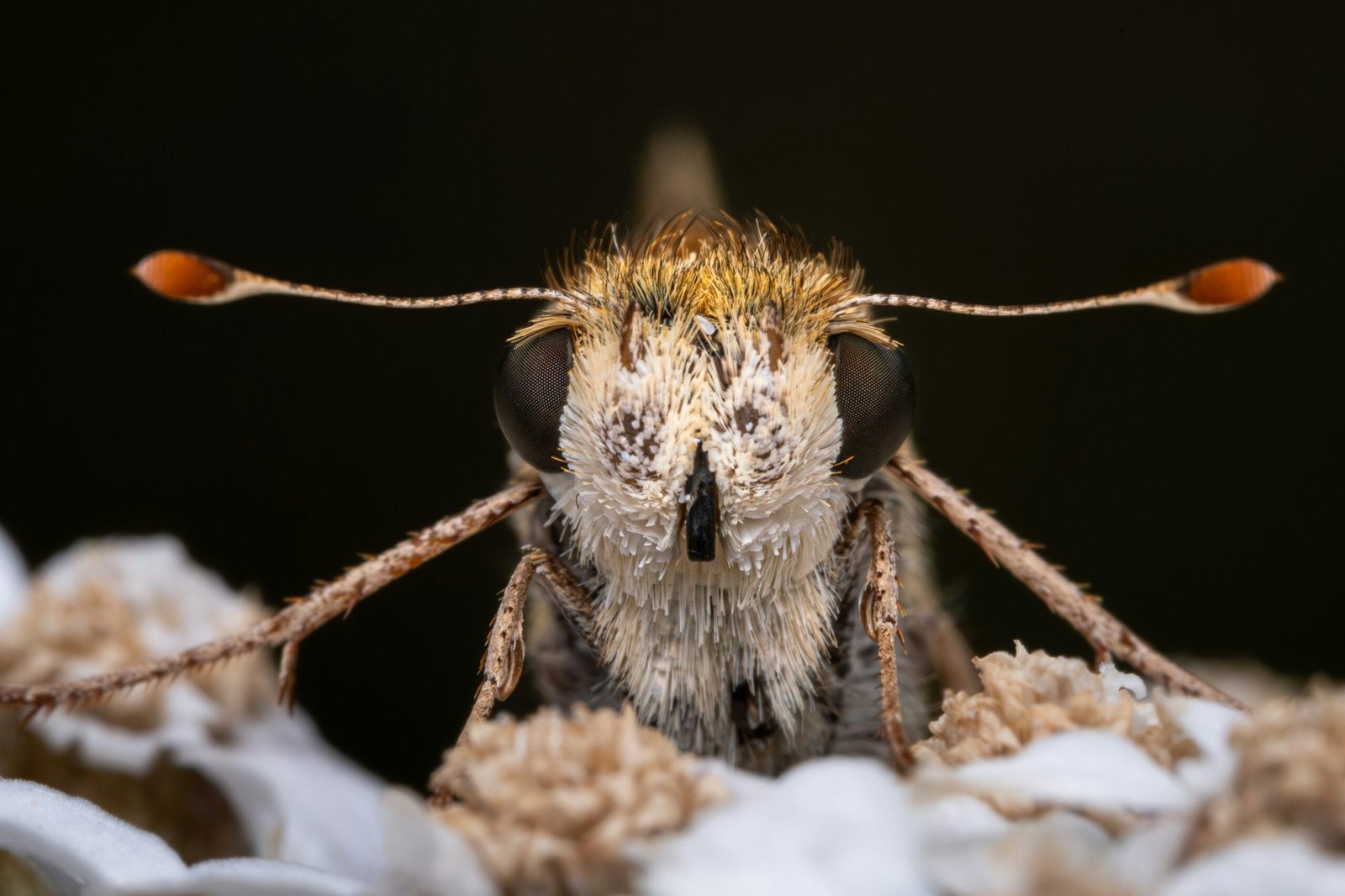Discover effective strategies to combat fruit flies in your home, including natural remedies and preventive measures. Learn how to identify breeding grounds, utilize DIY traps, and maintain a clean kitchen environment to keep these pesky pests at bay. Explore an array of home solutions and tips to reclaim your living space from fruit flies, ensuring a pleasant and inviting atmosphere for you and your family.
Introduction to the Fruit Fly Dilemma
As the sun begins to shine brighter and the warm weather settles in, many homeowners find themselves facing an unwelcome invasion: fruit flies. These tiny pests, often difficult to spot until they’ve multiplied in number, have a knack for infiltrating kitchens, where they can wreak havoc and cause annoyance. Encountering fruit flies while reaching for a snack or preparing meals can quickly turn a pleasant moment into a frustrating experience. Their small size and rapid breeding cycles make them remarkably effective at overwhelming your space.
Fruit flies are particularly prevalent during the late summer and early autumn months when the abundance of ripe fruits and vegetables creates an inviting breeding ground for them. Their presence often serves as a reminder to keep a tidy kitchen, but even the most diligent of homeowners can occasionally find themselves battling these persistent pests. The sight of a swarm of fruit flies hovering near a bowl of overripe bananas or a left-out glass of juice can be unsettling, making it easy to relate to the shared struggle against these tiny invaders.

Understanding the Intrusion: Why Fruit Flies are in Your Home
Fruit flies are a common nuisance in many households, particularly in kitchens where food is often stored and prepared. These small pests, scientifically known as Drosophila melanogaster, are primarily attracted to overripe or decaying fruits and vegetables. The sugars released from fermenting organic matter serve as a primary food source for these flies, making kitchens an ideal environment for them to thrive. Even a small pile of forgotten fruit can become a breeding ground for fruit flies, illustrating the importance of proper food storage.
Read this post and do not forget to check out the YouTube channel “Learn To Grow”
https://www.youtube.com/@LearnToGrow1
for more inspiration regarding other smart and clever ideas for your home interiors.
Let’s see one beautiful video from our channel:
How To Get Rid of Fruit Flies Fast! (video)
Another contributing factor to the presence of fruit flies in the home is dirty dishes and unwashed utensils. Residue from past meals can create an inviting environment for these insects, as they are drawn to the organic material left behind. If not addressed promptly, even a minor oversight concerning hygiene can lead to a significant infestation.
The lifecycle of fruit flies is remarkably short, typically lasting around 8 to 10 days. From the moment an egg is laid, which can happen on moist surfaces or close to decomposing food, it takes just a day for the eggs to hatch into larvae. These larvae then develop into adult flies within a few days. Consequently, a small population can escalate rapidly if the conditions remain favorable, allowing for several generations to emerge in a matter of weeks.
Identifying potential breeding grounds is crucial for managing fruit fly infestations. Regularly checking for overripe fruits, ensuring proper disposal of spoiled food, and maintaining cleanliness in the kitchen can significantly reduce the chances of these pests feeling at home in your apartment. Proper sanitation and food storage are not only vital in addressing current infestations but also in preventing future incursions.
Home Remedies that Actually Work
Dealing with fruit flies can be frustrating, but fortunately, several effective home remedies exist to combat these pesky insects. Using common household items can help you eliminate fruit flies without resorting to harsh chemicals. Below are a few practical solutions that are both simple and easy to implement.
One of the most popular methods is a vinegar trap. To create this remedy, fill a small bowl or jar with apple cider vinegar, then add a few drops of dish soap. The vinegar attracts the fruit flies, while the dish soap breaks the surface tension, preventing them from escaping once they land. Covering the jar with plastic wrap and poking small holes in it can enhance this trap’s effectiveness, creating an entry point while keeping the fruit flies confined.
Baking soda is another effective remedy for dealing with fruit flies. Combine equal parts of baking soda and sugar to create a bait mixture. The sugar lures the fruit flies, while the baking soda disrupts their digestive system. Simply sprinkle this mixture in areas where you have noticed fruit flies congregating and watch how it helps in reducing their population.
Essential oils also serve as a natural deterrent against fruit flies. Oils such as peppermint, eucalyptus, and lemongrass can be used to create a repellent spray. Mix around 10-15 drops of your chosen essential oil with water in a spray bottle. Lightly mist areas where fruit flies are present, ensuring to avoid any surfaces that may be negatively affected by oil. The scent will help keep these nuisances at bay.
These home remedies are not only efficient but also utilize items that you likely have on hand. By employing these strategies, you can take proactive steps in managing and reducing the presence of fruit flies in your apartment.
Preventive Measures: Keeping Your Space Fruit Fly-Free
Maintaining a fruit fly-free environment requires a proactive approach, focusing on effective preventive strategies. One of the most critical measures is proper food storage. Ensure that fruits, vegetables, and other perishables are stored in airtight containers or in the refrigerator. This method not only limits the availability of food sources for fruit flies but also preserves the freshness of your produce.
Regular kitchen clean-up routines play a significant role in preventing infestations. Establishing a habit of cleaning countertops, tables, and floors daily reduces the likelihood of attracting fruit flies. Pay special attention to areas where food particles or residue may accumulate, such as beneath appliances or behind the trash can. A weekly deep clean of the kitchen can help eliminate any esoteric sources that may lure these pests into your living space.
Besides the kitchen, also monitor other potential hotspots for fruit flies throughout your apartment. Areas such as the sink, garbage disposal, and compost bins are notorious for harboring these unwanted guests. Ensure that these spots are kept clean and free of decaying organic matter. Another effective strategy is to dispose of overripe or damaged fruits immediately if left unrefrigerated; they can swiftly become breeding grounds for fruit flies. On a personal note, I found that by simply placing a bowl of apples in the refrigerator instead of leaving them on the counter, I significantly reduced the frequency of fruit fly sightings in my home.
Lastly, make it a point to check any incoming groceries. Inspect your fruits and vegetables for any signs of fruit fly presence before bringing them into your living space. Such small changes can have a substantial impact on your battle against fruit flies, ultimately creating a cleaner and more pleasant environment. Implementing these preventive measures can go a long way in keeping your apartment fruit fly-free.
Alternative Remedies: Natural Solutions Worth Trying
When dealing with fruit flies in the apartment, many individuals seek effective yet natural remedies to combat these persistent pests. Various herbs and plants possess properties that can help repel fruit flies, offering a chemical-free alternative to conventional insecticides. For instance, basil, mint, and lavender are all known for their appealing scents to humans while being less attractive to fruit flies. Growing these herbs in your kitchen can provide a dual function: a culinary ingredient and a natural deterrent against unwanted insects.
Another effective DIY solution involves creating herbal-infused sprays. A simple recipe can be made by combining water, a few drops of dish soap, and a strong essential oil such as peppermint or eucalyptus. To prepare this, mix two cups of water with one teaspoon of dish soap and add ten drops of essential oil. Shake the mixture well before use and spray it around areas where fruit flies tend to gather. This homemade spray not only helps in reducing the population of fruit flies but also leaves your space smelling fresh.
Additionally, apple cider vinegar is a popular household item that works wonders in attracting and trapping fruit flies. By filling a small bowl with apple cider vinegar and covering it with plastic wrap, you can create a trap. Puncture holes in the plastic wrap, allowing the flies to enter but preventing them from escaping. This method effectively lures in fruit flies, providing a straightforward solution to a common problem.
Encouraging creativity in tackling fruit fly problems can lead to unique home remedies that others may find useful. Share your personal recipes or alternative solutions, as collective knowledge can enhance the effectiveness of natural pest control methods. Exploring these natural and DIY approaches allows individuals to manage fruit fly invasions while maintaining a safe and healthy living environment.
The Role of Attractants: What to Avoid
Understanding the role of attractants is essential in preventing the proliferation of fruit flies within your living space. Several common household items may inadvertently serve as magnetizing forces for these pests, highlighting the importance of adopting mindful practices in home management. One significant attractant is compost bins. While composting can be an eco-friendly choice, improperly sealed or maintained bins may become breeding grounds for fruit flies. If you choose to compost, ensure that the bin is properly covered and check it regularly to manage any decomposition that might attract pests.
Unsealed fruits are another frequent source of fruit fly activity. Overripe or damaged fruits emit ethylene gas, which entices these small flies, prompting them to linger around exposed produce. To mitigate this risk, store fruits in the refrigerator or in sealed containers rather than leaving them exposed on countertops. Be particularly vigilant with fruits like bananas, peaches, or tomatoes, which have a natural tendency to attract fruit flies when left out in the open.
Leftover take-out containers, especially those that contain food remnants, can also lure fruit flies into your home. Even if you believe that the food is securely stored, traces of food odor can escape, creating an inviting atmosphere for these pests. It is advisable to clean food containers thoroughly before placing them in the trash or recycling bin. Additionally, maintaining a clean kitchen environment can significantly reduce the likelihood of attracting fruit flies. Regularly wipe down surfaces, promptly dispose of trash, and keep sinks clean and dry to lower the chances of inviting these unwelcome guests into your home.
Myths and Misconceptions About Fruit Flies
Fruit flies are often given a bad rap, which can make discerning fact from fiction quite challenging. One prevalent myth is that fruit flies originate solely from overripe fruit. While it is true that these insects are attracted to fermenting produce, their breeding grounds often lie in areas that are not immediately obvious. Think of damp drains, lingering food residues, or sticky kitchen surfaces—places that can become inadvertent nurseries for these pesky pests. This leads us to question whether it’s merely the fruit that contributes to their existence.
Another common misconception is that fruit flies are a sign of unsanitary conditions. In reality, they can infest even the cleanest homes, as their tiny size allows them to enter through the tiniest openings. Even if you meticulously maintain your apartment, an open window or a crack in the wall can allow fruit flies to make themselves at home. The lure of fermenting substances, from fruit to beer, is simply too enticing for them to resist. So before you start worrying about your cleaning habits, remember that fruit flies are opportunistic; they don’t discriminate based on cleanliness.
Some people also believe that once fruit flies are in your home, you might as well give up—their determination seems unmatched. However, by applying effective home remedies, you can easily disrupt their reproduction cycle. The right traps can assist in capturing and eliminating them. Let’s not forget the myth that fruit flies cannot harm humans; while they are not known carriers of diseases, their mere presence can be a nuisance, especially in food preparation areas.
By debunking these myths, we can foster a better understanding of fruit flies and how to manage them effectively. It’s time to take back our spaces from these minuscule intruders—after all, knowledge is power!
When to Call in the Professionals
While home remedies can be effective in managing minor infestations of small fruit flies, there are scenarios where these measures may prove insufficient. A noticeable uptick in the population of fruit flies could indicate a more significant underlying problem that requires professional intervention. It is crucial to recognize these warning signs, which may include persistent fruit fly activity despite repeated home remedy applications, sightings of flies in multiple areas of the home, or fruit flies congregating around drains or other non-food sources. These instances are often indicative of an established breeding site that home solutions may not eliminate.
Moreover, if you find small fruit flies emerging from unseen areas within your home or a strong, musty odor that accompanies their presence, it may be time to consult a pest control professional. These specialists possess the training and experience necessary to identify and address the source of the infestation effectively. Given that fruit flies reproduce rapidly, timely action is vital to prevent further escalation and protect your living environment.
When seeking professional pest control services, consider a few key factors to ensure you choose a reputable provider. First, check for credentials such as licenses, certifications, and insurance. A qualified pest control service will typically be registered with state or local regulatory agencies. Additionally, look for online reviews and testimonials to gauge the experiences of other consumers. Asking for recommendations from friends or family can yield trustworthy service providers as well.
Finally, inquire about the methods and materials the pest control service uses, ensuring they adhere to safe and environmentally responsible practices. These steps can give you peace of mind that your home will be treated effectively and safely. If you find the infestation is beyond your control, rest assured that professional help is readily available and can restore your apartment to a fruit fly-free state.
Conclusion: Embracing a Fly-Free Home
Maintaining a fruit fly-free home is certainly achievable by implementing the right strategies and remedies. As discussed, these small nuisances can be effectively managed through various home remedies that require minimal effort and resources. First and foremost, keeping surfaces clean and food stored securely will significantly reduce the likelihood of attracting fruit flies. Regularly discarding overripe fruits and cleaning up any spills will further create an unfriendly environment for these pests.
Additionally, utilizing natural solutions such as apple cider vinegar traps, which are simple to create, can serve as an excellent deterrent. These methods not only promote a cleaner living space but also align with eco-friendly practices that are more sustainable. With persistence and diligence, it is possible to control and minimize the presence of fruit flies in your kitchen and other areas of your home.
We encourage our readers to share their own tips and experiences regarding fruit fly management in the comments section or on social media. Building a community focused on solutions for this common household issue can lead to valuable insights and strategies that benefit everyone. Remember, maintaining a tidy kitchen and being proactive about potential attractants will substantially elevate your chances of enjoying a fly-free environment.
Keep your spirits high and do not let a few tiny fruit flies dictate the atmosphere of your kitchen. With the right approach and shared knowledge, you can cultivate a pleasant and inviting space in your home, free from these pesky invaders. Let us embrace the journey toward a fruit fly-free home together!
Other related posts from our website:
https://howtobuildahouseblog.com/creating-a-garden-that-bumblebees-bees-and-butterflies-love/
https://howtobuildahouseblog.com/how-to-get-rid-of-fruit-flies-from-your-kitchen-and-house/
https://howtobuildahouseblog.com/keep-flies-out-of-the-house-without-chemicals/
We sincerely hope that our video and post can help you.
Please, write your opinion in the comment section and do not forget to subscribe to our channel if you are new to our YouTube channel.
See you soon at another post.
Bye, Bye



No Responses